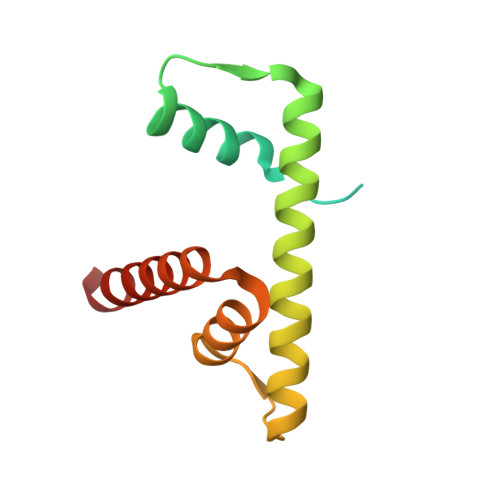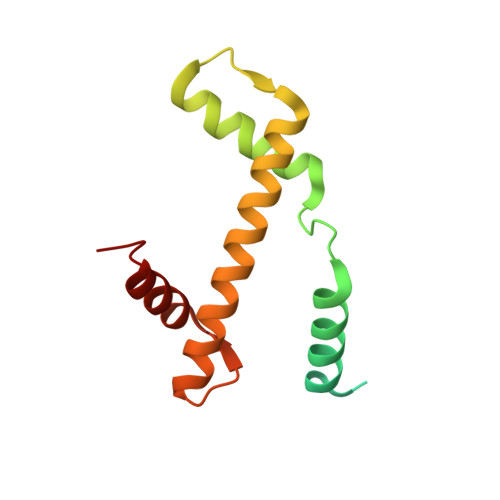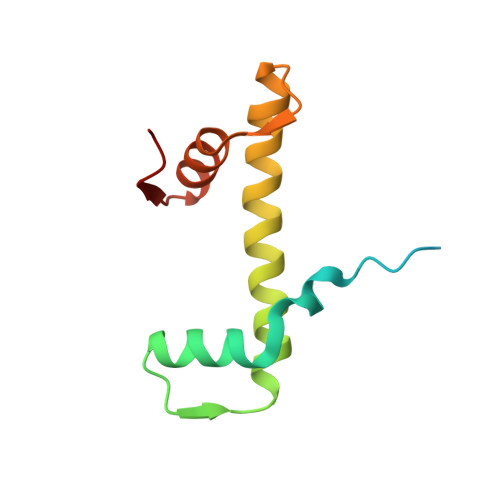The oxidised histone octamer does not form a H3 disulphide bond.
Wood, C.M., Sodngam, S., Nicholson, J.M., Lambert, S.J., Reynolds, C.D., Baldwin, J.P.(2006) Biochim Biophys Acta 1764: 1356-1362
- PubMed: 16920041
- DOI: https://doi.org/10.1016/j.bbapap.2006.06.014
- Primary Citation of Related Structures:
2ARO - PubMed Abstract:
A H3 dimer band is produced when purified native histone octamers are run on an SDS-PAGE gel in a beta-mercaptoethanol-free environment. To investigate this, native histone octamer crystals, derived from chicken erythrocytes, and of structure (H2A-H2B)-(H4-H3)-(H3'-H4')-(H2B'-H2A'), were grown in 2 M KCl, 1.35 M potassium phosphates and 250-350 microM of the oxidising agent S-nitrosoglutathione, pH 6.9. X-ray diffraction data were acquired to 2.10 A resolution, yielding a structure with an Rwork value of 18.6% and an Rfree of 22.5%. The space group is P6(5), the asymmetric unit of which contains one complete octamer. Compared to the 1.90 A resolution, unoxidised native histone octamer structure, the crystals show a reduction of 2.5% in the c-axis of the unit cell, and free-energy calculations reveal that the H3-H3' dimer interface in the latter has become thermodynamically stable, in contrast to the former. Although the inter-sulphur distance of the two H3 cysteines in the oxidised native histone octamer has reduced to 6 A from the 7 A of the unoxidised form, analysis of the hydrogen bonds that constitute the (H4-H3)-(H3'-H4') tetramer indicates that the formation of a disulphide bond in the H3-H3' dimer interface is incompatible with stable tetramer formation. The biochemical and biophysical evidence, taken as a whole, is indicative of crystals that have a stable H3-H3' dimer interface, possibly extending to the interface within an isolated H3-H3' dimer, observed in SDS-PAGE gels.
- School of Biomolecular Sciences, Liverpool John Moores University, Byrom Street, Liverpool, L3 3AF, UK. c.m.wood@ljmu.ac.uk
Organizational Affiliation:





















